Featured Articles
Sonny Liston’s Blues Send Sad Notes 50 Years Into Future
Some day they’re gonna write a blues for fighters. It’ll just be for slow guitar, soft trumpet and a bell.” — Sonny Liston
One can’t deny that there is something about Sonny’s quote that resonates deeply. And on many levels. It’s unseen but blares within us, though gently. Perhaps it’s due to history’s recording that Sonny’s ending wasn’t a good one. And perhaps, also, that’s what Sonny really was, gentle and soothing. Or at the very least — in the cacophony of extreme degrees of his complex world — he was in search of it. As all fighters are, really.
Clang!
Wind chimes, second cousins, of the boxing ring’s bell, disrupt the silence on the patio where I sit writing this story. And from black skies above me, hundreds of stars twinkle whispers of appreciation.
Whispering what?
Adulation?
Sonny didn’t trust it. How could he? Illiterate and battered by an unfulfilled father and abandoned by an abused mother, he was forever lost. But there was another who would come along. The same color as Sonny, only with a different set of circumstances. Better circumstances than Sonny, but perhaps still not better than most. Still, it was enough to prepare and propel him. May 25, 2015, was the fiftieth anniversary of second fight between Liston and Muhammad Ali. The fight christened the dawning (to the dismay and delight of many) of a disruptive and uncomfortable bolt of thunder and lightning named Cassius Clay, aka Muhammad Ali.
Cassius Clay — to the total surprise of the experts — would handle Sonny rather easily during their first Miami encounter in February of 1964. Sonny had his moments. But the young cat — literally cat-like — controlled the tempo and the boxing ring’s general geography. He systematically shut down Sonny and relegated one of the greatest heavyweight champions in history, to ordinary journeymen status.
Yes, you read that correctly. One of the greatest heavyweight champions in history.
Top three?
In my view, absolutely. In his prime, Sonny’s technique, talent and temperament stops Marciano. Forty nine and oh? More like forty nine and uh oh. Same with Joe Louis.
Interestingly enough, Sonny would have had problems with Joe Walcott, the former heavyweight champ who refereed Ali-Liston II. Walcott was a victim of Marciano and Louis, but Walcott was a slick, talented, cutie-pie boxer who could crack. I see him taking Sonny deep but I think Sonny wears him down and stops him late. Maybe.
Louis and Marciano looked to “punch.” They couldn’t have ‘punched’ and survived with Sonny.
Larry Holmes could and would have because of the three T’s I mentioned before: talent, technique, temperament. Larry’s stock and trade, his jab, his mind and movement would ensnarl Sonny. It’s a good fight though. Like Ali, Holmes, in his prime, and even after it, knew when, where and how to pull the trigger, in the moment. He was brilliant.
Fifty years ago no one had seen or imagined anything like what was fashioned in the great grandson of abolitionist Cassius Marcellus Clay. His namesake would emphatically put a stamp on his unique approach (in and out the ring) with his first-round knockout of Sonny in Lewiston.
To boxing purists,- the likes of Cus D’Amato chief among them- Ali’s ring behavior was dangerously outside the conventional approach to fighting. In the ring Ali, did everything wrong. He performed with hands by his sides and awkwardly — to the conventionalist — leaned back from opponents punches.
He eschewed body shots and danced –glided as if on skates, actually — to lyrics and a rhythm only he heard. To the gate keepers of America’s status quo, Ali conducted himself with equal- no, scratch that. With a singleness of purpose that was ferocious.
Ali’s protestations — echoes of Malcolm X , his Nation of Islam mentor who was slain a few weeks before the Lewiston rematch — would bring about death threats from those in allegiance with Malcolm as well unwanted attention from the eyes ears of The Company (CIA). The heavyhandedness of the period notwithstanding, history records that one of the greatest heavyweights – Sonny Liston – lost by KO in mysterious fashion to Muhammad Ali in the Lewiston, Maine. There were supposed to be death threats against both fighters. Whether it was Brothers from the Nation of Islam or organized crime, if the fight was fixed Jimmy Breslin’s ‘The Gang That Couldn’t Straight’ must’ve been pulling strings.
In preparation for my portrayal of Sonny Liston in Michael Mann’s ‘ALI’, I was given written works and videos on Sonny. I knew who Sonny was but the rich material supplied to me more than helped fill in the blanks. I’d sit in front of a video monitor and study, frame by frame, Sonny’s movements, idiosyncrasies, in and out of the ring and parse, with the volume muted, rewind and parse again. I’d look at the black and white images of Sonny and the unheard linguistics of his body,- they blared mightily- as he skipped rope to James Brown’s ‘Night Train’, this I’d turn up the volume for- or as when a laugh thundered from him while he was in the company/protection of children.
There were also awkward moments that were in just as awkward and grainy and distorted color images of when he would be seated, talking with a reporter. His searching, protective, untrusting eyes-even in moments where he donned the mask of hubris, one painfully birthed from the canal of private overcoming’s and public triumphs, his eyes would momentarily glazed over with the expectations that abject disappointment was always up ahead and a step or two behind him.
Muting the volume really put me in touch with the essence of who he was and he came alive for me. As Sonny was an illiterate, he behaved as a man who thought that he wasn’t being heard but simply seen. In the upheaval of the sixties, he was not being seen on his terms, either. Sound and speech are only masks for what’s underneath them.
I’m not that unfamiliar with the feelings that coursed through Sonny.
No fighter is. And that’s why we fight or did fight. To be seen, much more than heard, on what we think are, our own terms.
On extremely rare occasions though, the likes of William Shakespeare, Marlon Brando, Muhammad Ali, Miles Davis, or John, Paul, George and Ringo or Elia Kazan or Bob Marley comes along with the gift (or burden-take your pick) that unapologetically marry ‘what they are saying to us with what they are doing to us.’
Our collective volumes are turned up to full blast, their higher frequencies agitate our molecules into some form of action, whether we like it or not.
‘Your Momma wont lose this one/ Your the lucky one, under the sun/If ya
make me move then you know you’ve got the groove’ – Bob Marley.
Esoteric b—–t? No, all relatable on some levels, if open to it. Ali was completely open to the complexities-if not in full comprehension of them, but who is?- of his world fifty years ago.We can see it in his confusion, which then flashes into outrage while he glares downward, right fist-to his chest- positioned and taunting contemptuously over Sonny.
Fifty years later, Neil Leifer’s iconic photo of two giants, one fallen, -on posters and tee-shirt’s – still symbolizes, the world over, majestic dominance. And just think, it all started with yet another ‘shot’-from the pot boiling-over called The 60’s- that was heard and seen around that world.
In my breaking down of the who, what, why, where and how of the events of Ali-Liston II for the film, I came to a conclusion. The phantom punch was a clean one delivered by Muhammad. Notice, I said clean. As in, it landed flush. But would the punch thrown by Ali -not known as a one-punch knock out artist – in that specific moment result in a stoppage of a fighter of Sonny’s quality? Doubtful.
A flash knockdown as a result of that shot? That’s more believable. But not really because Sonny didn’t sell us it or cell it to himself, very well. And it looked just like what it was, bad acting on Sonny’s part.
Buy why? The look in his eyes afterward, for just a moment: self loathing.
Why?
The Phantom punch was borderline bourgeois,- more style than substance. Not that Muhammad chucked it in that context. He threw that right hand as he threw all of his right hands: with primal elegance, in search of the disruption of hardwire within the faculties of the head it crashed into.
But Ali’s capacity for punching lacked the potency to get someone out of there with literally one shot. He’d never done it before.
Dispatching an opponent with an avalanche of them? Yep – see Ali- Cleveland ‘Big Cat’ Williams. No one- with his a combination of guile, grace and killer instinct- did it better.
Ever.
Would Muhammad’s right hand get Sonny’s attention? Sure. Cause a stoppage? Non cipher.
What caused the stoppage was the macro chaos revolving around the micro chaos of Joe Walcott’s panic, Muhammad histrionics, and Sonny’s capitulation. The aforementioned death threats-hovering over both fighters- didn’t assist in facilitating an uneventful evening either. Sonny was looking for a way out.
It happens.
Recently, Manny Pacquiao, -though he was coming forward against Floyd- looked for a pleasant,agreeable-barely confrontational- way out and succeeded in finding it.
But I digress.
Sonny was coming forward when the shot hit him fifty years ago. Force against force, physics 101.
Yeah….but.
In Sonny’s next to last fight, he was knocked out by one of his former sparring partners. Leotis Martin put two shots together and in graphic fashion, deposited Sonny, face first, onto the canvas, and virtually out cold. Ali — four and a half years prior in Lewiston — never hit Sonny like that.
Or, should I say Sonny never responded to Ali’s Phantom punch like he responded to Martin’s undubbed one.
While prepping for ‘Ali’, I was put in contact with a Las Vegas associate of Ash Resnick, the manager of Sonny.The associate proceeded to give me his insights on Sonny and would also also forward the contact number of Davey Pearl. Mr. Pearl,-famously was the third man in the ring during Leonard-Hearns I- in his 80’s when we spoke, used to be one of Sonny’s best friends.
Near the close of Sonny’s life, he and Mr. Pearl would go for early morning runs on and around Las Vegas golf courses. He travelled with Sonny to ‘keep him straight’ as he told it to me. They went together to New Jersey for Sonny’s last fight against Chuck Wepner.
The Ali-Liston rematch was originally scheduled for November 16, 1965 at Boston Garden, Mr. Pearl would tell me that Sonny’s conditioning clicked, focused and returned to that of his two round in two fights blitzkrieg of Floyd Patterson, saying that Sonny ‘was in the best shape of his career’.
But wherever Muhammad and Liston went drama followed. Sonny would never get to show what kind of shape he was in. Three days before the rematch, Ali suffered a hernia and the fight was postponed six months.
Perpetually Effed! – That’s Sonny’s word not mine. I mean I played him but……
History.
What a concept.
Blues: Sonny Liston: slow, easy and methodical.
Rock and Roll: Ali: outwardly disruptive
-

 Featured Articles4 weeks ago
Featured Articles4 weeks agoThe Hauser Report: Zayas-Garcia, Pacquiao, Usyk, and the NYSAC
-
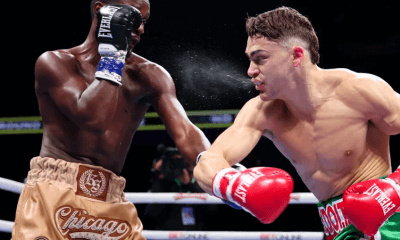
 Featured Articles3 weeks ago
Featured Articles3 weeks agoOscar Duarte and Regis Prograis Prevail on an Action-Packed Fight Card in Chicago
-
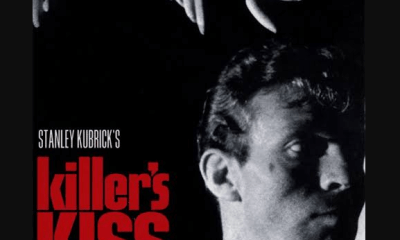
 Featured Articles2 weeks ago
Featured Articles2 weeks agoThe Hauser Report: Cinematic and Literary Notes
-
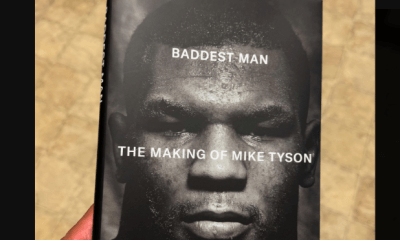
 Book Review2 weeks ago
Book Review2 weeks agoMark Kriegel’s New Book About Mike Tyson is a Must-Read
-

 Featured Articles4 weeks ago
Featured Articles4 weeks agoRemembering Dwight Muhammad Qawi (1953-2025) and his Triumphant Return to Prison
-
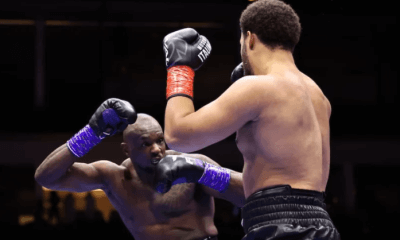
 Featured Articles7 days ago
Featured Articles7 days agoMoses Itauma Continues his Rapid Rise; Steamrolls Dillian Whyte in Riyadh
-
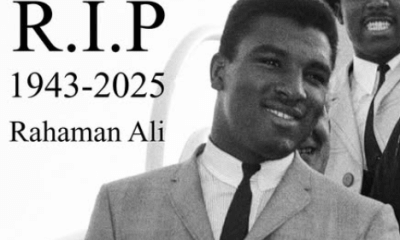
 Featured Articles3 weeks ago
Featured Articles3 weeks agoRahaman Ali (1943-2025)
-

 Featured Articles3 weeks ago
Featured Articles3 weeks agoTop Rank Boxing is in Limbo, but that Hasn’t Benched Robert Garcia’s Up-and-Comers














